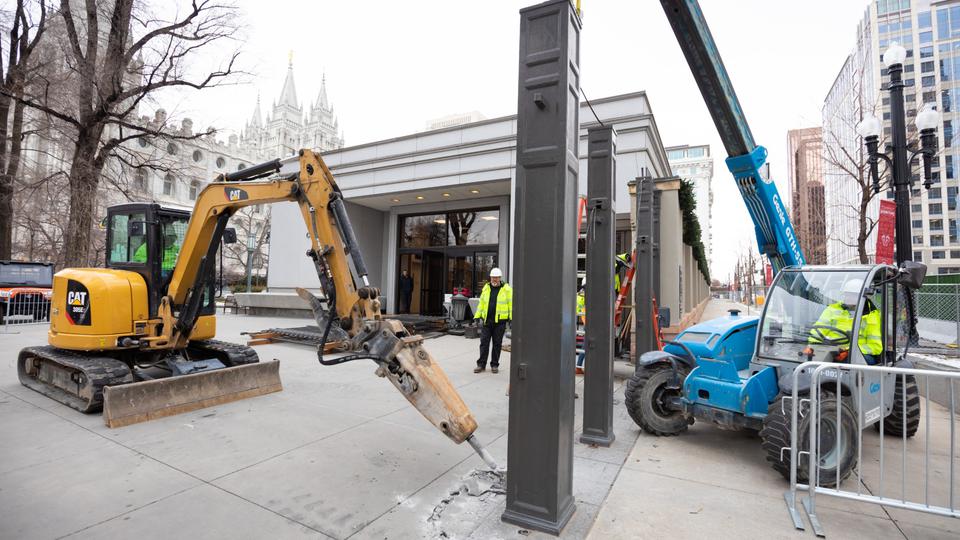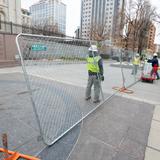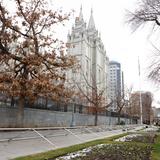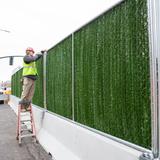Within hours of the closure of the Salt Lake Temple for an extensive renovation, workers got busy transitioning the sacred structure from a working temple to a construction site.
This process, known as decommissioning, takes several weeks. It is an important first step in the yearslong project that will restore and refresh the historic temple and help strengthen it against earthquakes.
| Alrededor del Templo de Salt Lake se colocaron cercas para permitir las labores de remodelación. 2020 by Intellectual Reserve, Inc. All rights reserved. | 1 / 5 |
“Each time we renovate a temple of The Church of Jesus Christ of Latter-day Saints, decommissioning occurs to remove sacred items and turn the building into a construction site,” said Rich Sutton, temple area director. “We have been preparing for months for this process, which began almost immediately after the temple closed to patrons on December 29.”
“The Salt Lake Temple is somewhat unique due to its size and the years of history dating back to 1893,” added Emily Utt, curator in the Church History Department. “This building has been carefully cared for and preserved for a long time, and it’s a sacred experience to be involved in preparing it for this next important step.”
What does decommissioning involve?
During the decommissioning, the Church’s Temple Department works to remove sacred items from the building, including temple clothing, temple records and other items used in the completion of temple ordinances. As soon as this is completed, the temple is no longer considered a dedicated building, and a recommend is not needed for renovation crews to enter. Simultaneously, workers clean out the temple laundry, offices and custodial closets.
The next step is to remove furniture from the temple. Workers thoughtfully ensure that all furniture is taken to the most appropriate places, which can include storage warehouses or other Church facilities. In some instances, relevant furniture items can also be donated to help support local nonprofit organizations.
In addition to furniture, workers also remove stained glass windows, historic light fixtures and other items that need to be protected during the renovation. They also set up infrastructure to protect historic finishes that will remain in place during the renovation. Several artifacts from the Salt Lake Temple will be on display in the Conference Center at various times throughout the renovation.
The final steps of the decommissioning process involve asbestos abatement and setting up temporary power and utilities for the temple construction. Once this is finished, crews will be able to begin the meticulous process of renovating the temple and seismically strengthening it, helping ensure it will stand for generations to come.
“Even as this temple becomes a construction site, we never lose sight of its sacred purpose and history,” said Andy Kirby, director of historic temple renovations. “The decommissioning process allows us to carefully take care of what is inside the temple so we can then focus on our job of fortifying and protecting this house of the Lord.”
The importance of temples
Latter-day Saints consider temples to be the most sacred places of worship on the earth. Temples differ from the Church’s meetinghouses (chapels). All are welcome to attend Sunday worship services and other weekday activities at local meetinghouses. The primary purpose of temples, however, is for faithful members of the Church to participate in sacred ceremonies such as marriages, which unite families forever, and proxy baptisms on behalf of deceased ancestors who did not have the opportunity while living.
The renovation of the Salt Lake Temple is expected to be complete in 2024, followed by a public open house and rededication. Temple Square remains open during the renovation, with a new visitor experience available at the Conference Center.
For more information on Temple Square, visit TempleSquare.org.






